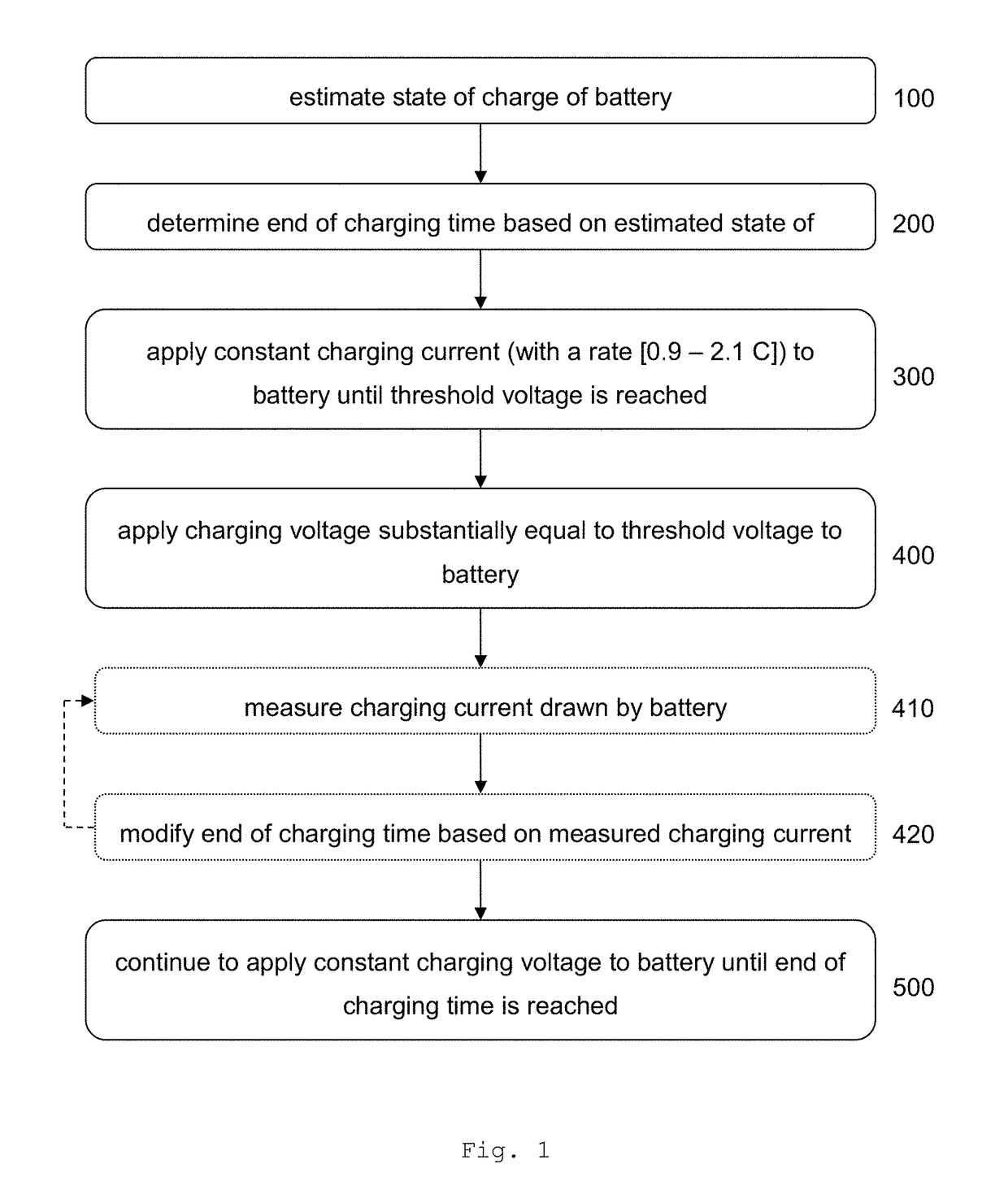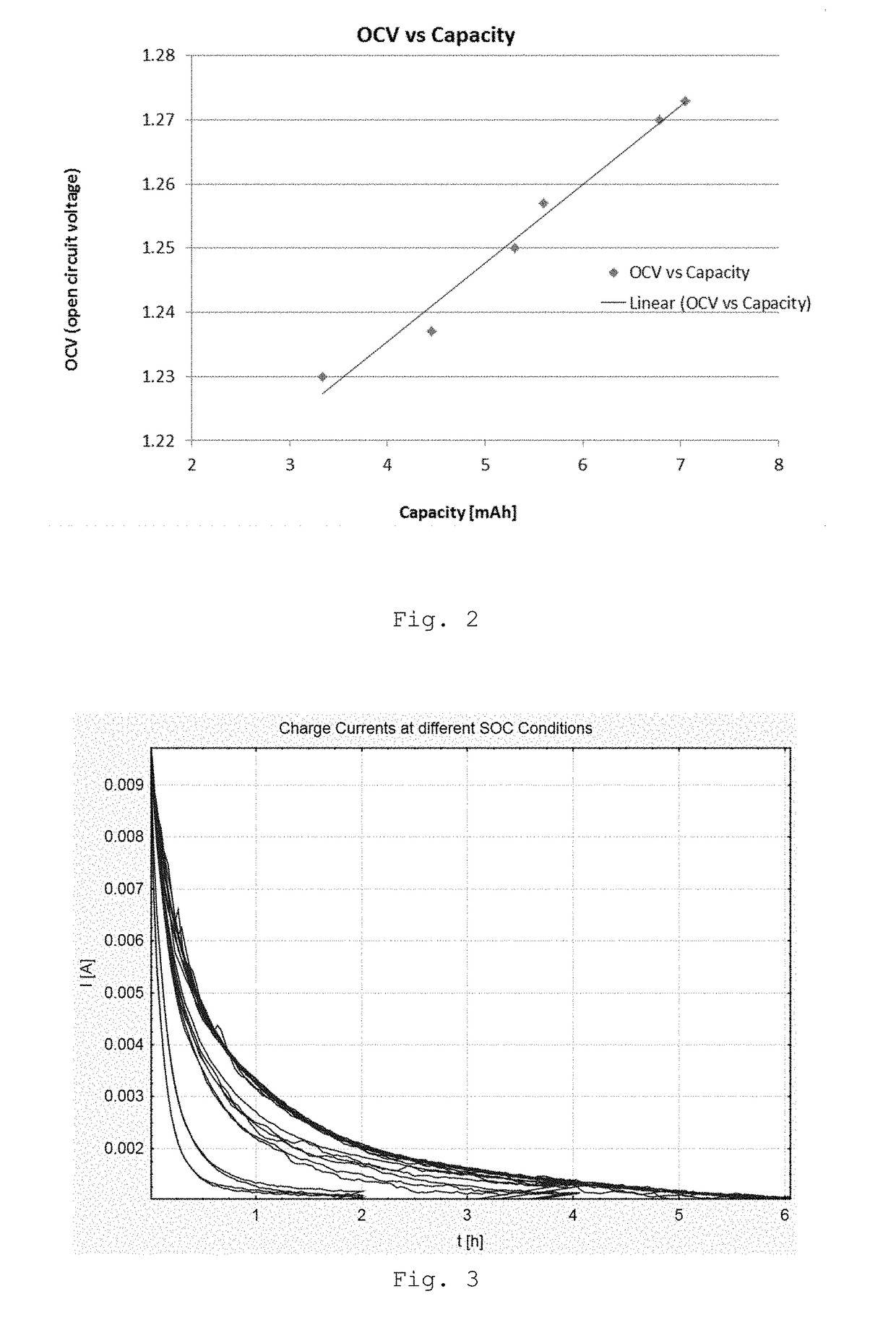Method for charging a NIMH battery, a battery charger and a system comprising a battery charger and a hearing device
a charging method and battery charger technology, applied in the direction of charging attachments/accumulators, electric vehicles, instruments, etc., can solve the problems of battery replacement, battery size and difficulty in handling, and substantial financial burden on the users of such devices, so as to reduce the required charging time, improve the charging method, and prevent overcharging
- Summary
- Abstract
- Description
- Claims
- Application Information
AI Technical Summary
Benefits of technology
Problems solved by technology
Method used
Image
Examples
Embodiment Construction
[0057]FIG. 1 depicts a flowchart of exemplary methods for charging a NiMH battery according to the present invention. Initially, the state of charge of the battery is estimated in step 100. Depending on the estimated state of charge the charging duration is determined, i.e. the end of charging time is scheduled in step 200. The charging process then begins by applying a constant charging current with a rate in the range of 0.9 C to 2.1 C to the battery in step 300. For clarification, the quantity of the charging current that is applied to a battery is commonly defined in terms of the rated capacity C (cf. standard IEC-61436 section 1.3.4) of the battery. For example, a battery rated at 12 mAh that is charged at a rate of 1 C will be fully charged to its rated capacity in one hour. This high constant charging current is maintained until a threshold voltage is reached. In an embodiment the threshold voltage is determined dependent on the ambient temperature of the battery according to...
PUM
 Login to View More
Login to View More Abstract
Description
Claims
Application Information
 Login to View More
Login to View More - R&D
- Intellectual Property
- Life Sciences
- Materials
- Tech Scout
- Unparalleled Data Quality
- Higher Quality Content
- 60% Fewer Hallucinations
Browse by: Latest US Patents, China's latest patents, Technical Efficacy Thesaurus, Application Domain, Technology Topic, Popular Technical Reports.
© 2025 PatSnap. All rights reserved.Legal|Privacy policy|Modern Slavery Act Transparency Statement|Sitemap|About US| Contact US: help@patsnap.com



